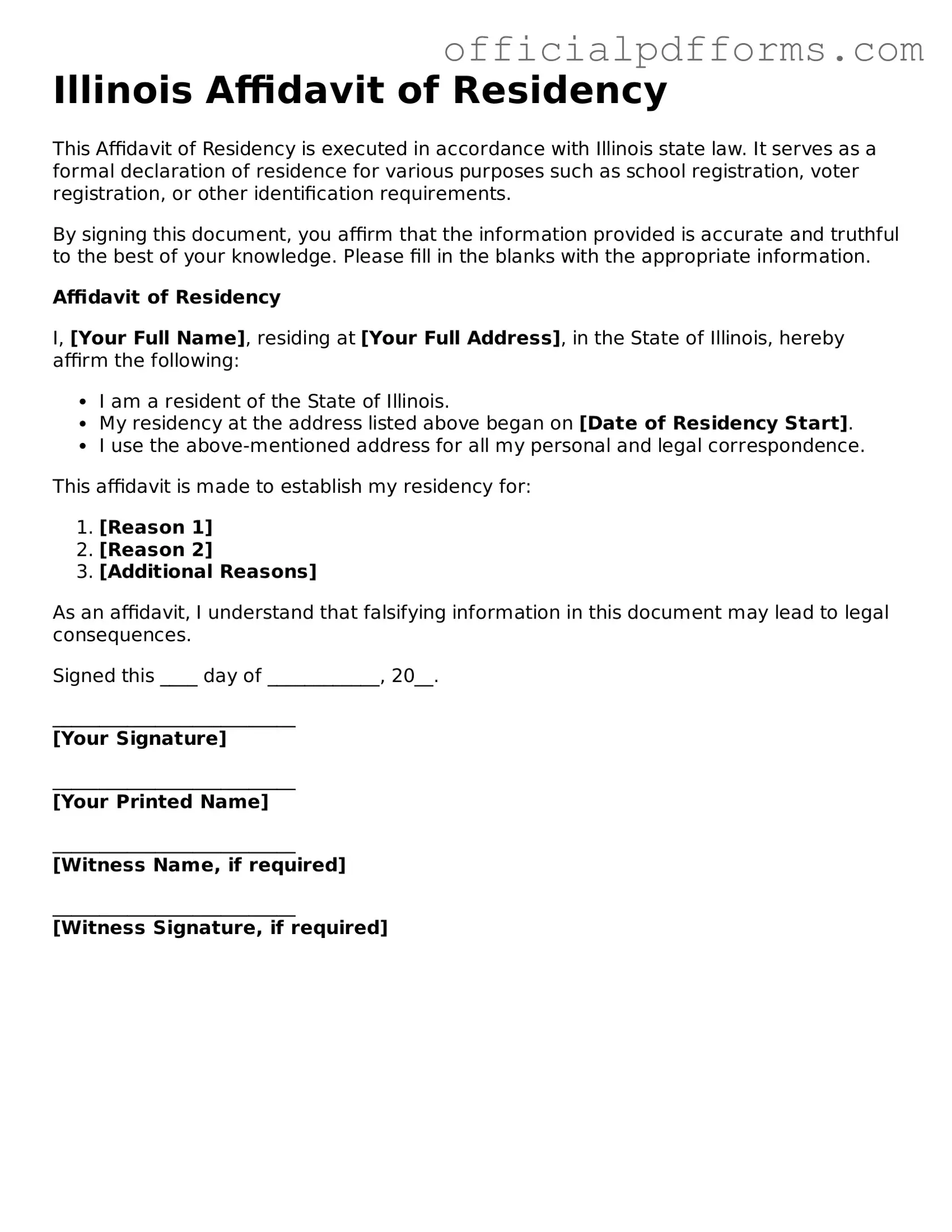The Illinois Affidavit of Residency form is a legal document used to verify an individual's residency in the state of Illinois. This form is often required for various purposes, such as enrolling a child in school, applying for certain government benefits, or establishing residency for legal proceedings. By completing this affidavit, individuals affirm their permanent address and confirm their status as residents of Illinois.
Who needs to fill out the Affidavit of Residency?
Typically, anyone who needs to prove their residency in Illinois may need to fill out this form. This includes:
-
Parents or guardians enrolling their children in public schools.
-
Individuals applying for state benefits or services.
-
Residents seeking to establish their residency for legal matters.
In some cases, institutions or organizations may require this affidavit to confirm residency for eligibility purposes.
Completing the Illinois Affidavit of Residency form involves several straightforward steps:
-
Obtain the form from a reliable source, such as a school district or government website.
-
Fill in your personal information, including your name, address, and date of birth.
-
Provide any additional information required, such as the names of family members residing at the same address.
-
Sign and date the affidavit in the presence of a notary public, if required.
Make sure to double-check your information for accuracy before submission.
Is notarization required for the Affidavit of Residency?
In many cases, notarization is required to validate the Affidavit of Residency. This means that you will need to sign the form in front of a notary public, who will then verify your identity and witness your signature. However, some organizations may accept an unsigned affidavit or may have specific requirements regarding notarization. It’s essential to check with the entity requesting the affidavit to understand their particular rules.
The submission process for the Affidavit of Residency varies based on its intended use. For example:
-
If you are enrolling a child in school, submit the form to the school district office.
-
For government benefits, send the affidavit to the relevant agency or department.
-
In legal matters, file the form with the appropriate court or legal office.
Always keep a copy of the completed form for your records.
If you realize that you made a mistake on the Affidavit of Residency after submitting it, contact the entity that received the form as soon as possible. They may instruct you to correct the error by submitting a new affidavit or provide guidance on how to amend the existing one. It’s important to address any inaccuracies promptly to avoid potential complications.
Can I use the Affidavit of Residency for purposes outside of Illinois?
The Affidavit of Residency is specifically designed for use within Illinois. If you need to prove residency in another state, you will likely need to complete a different form that complies with that state’s requirements. Always check the specific guidelines of the state or organization you are dealing with to ensure you provide the correct documentation.
